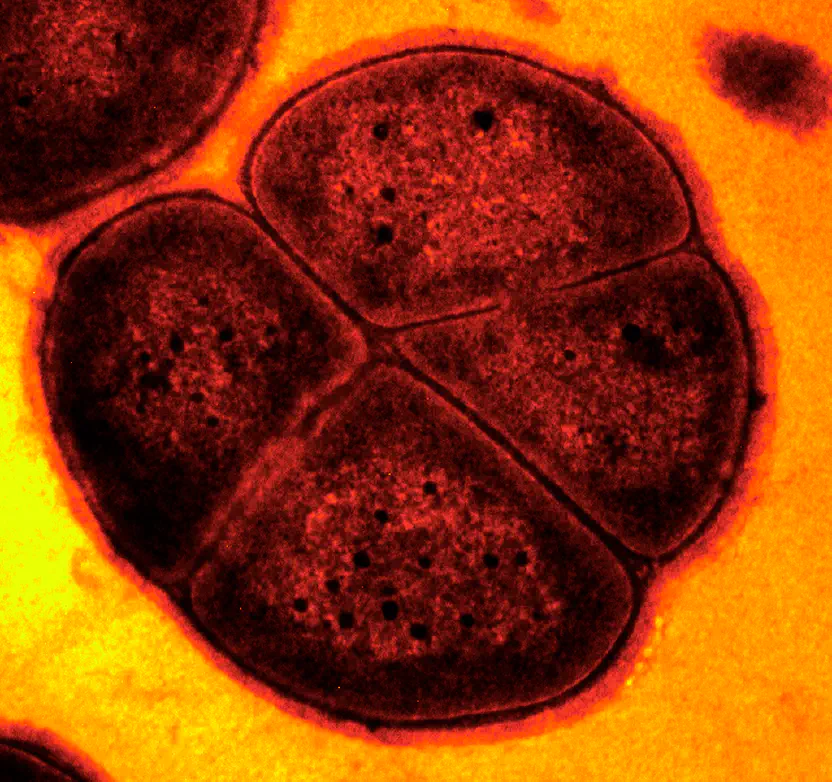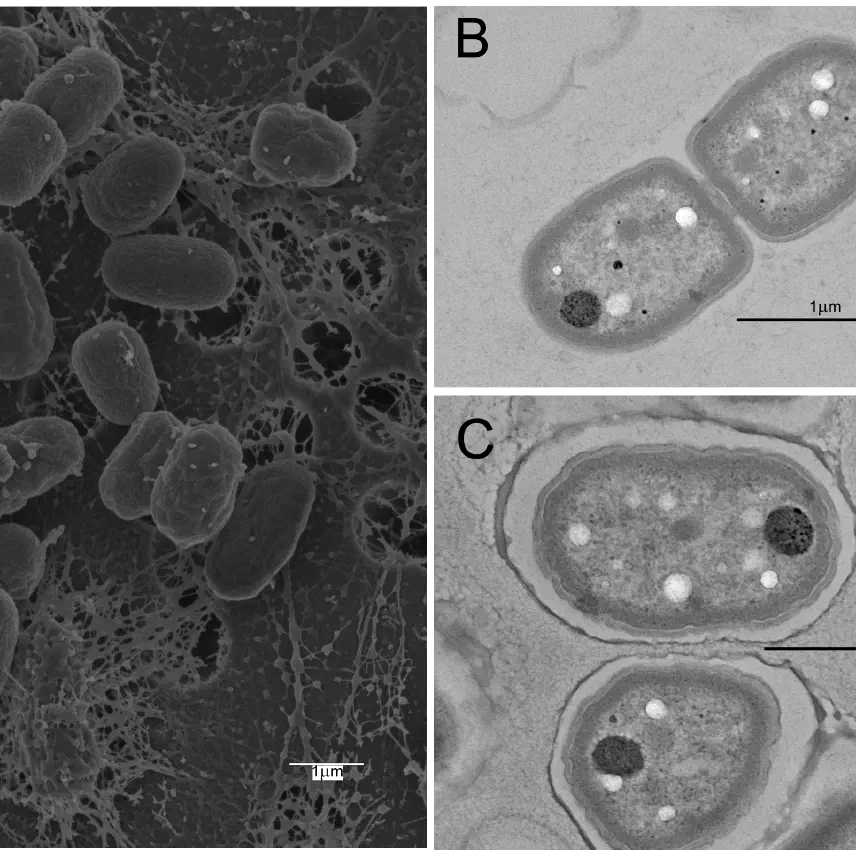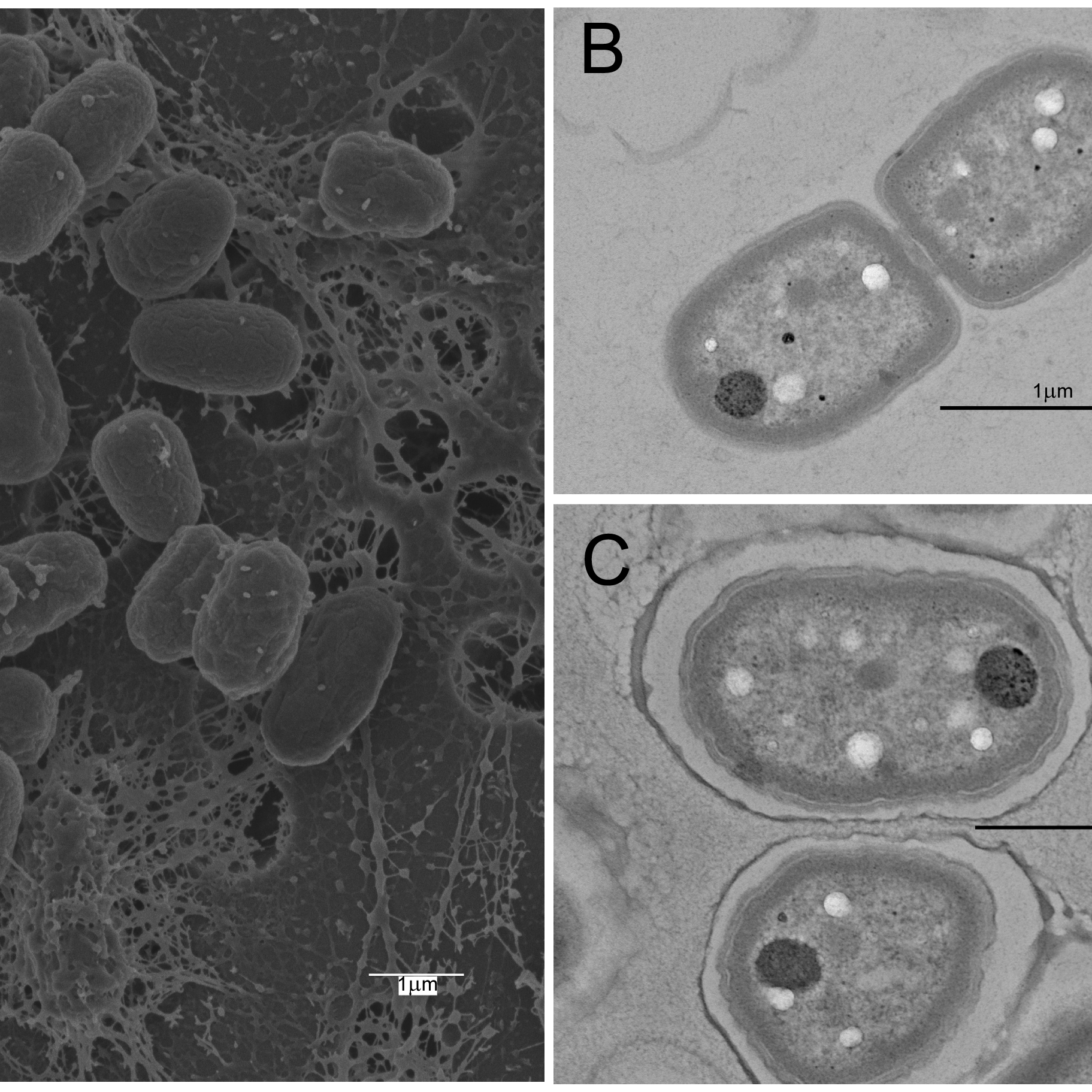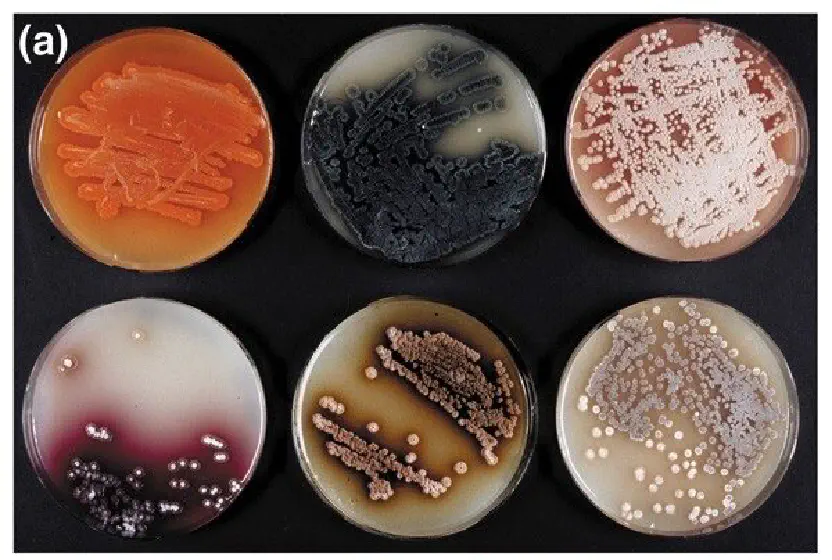
 08.25.2021
08.25.2021Deinococcus radiodurans
Deinococcus radiodurans is an extremophilic organism, meaning it can live in extremely challenging environments – its name literally means “a strange berry that withstands radiation.”


Gloeobacter violaceus lives on rocks and sunlight.
Originally isolated from a limestone rock in Switzerland, G. violaceus is rod-shaped, Gram-negative bacteria. It belongs to a group of bacteria called cyanobacteria: bacteria that are able to photsynthesize, converting light energy into chemical energy. However, G. violaceus exhibits curious properties that make it unlike other typical cyanobacteria: it is the only cyanobacteria which lacks thylakoids, an internal membrane that is the site of light-dependent reactions of photosynthesis. Instead, it harvests light through proteins that sit inside its plasma membrane.
It is believed that G. violaceus split from its cyanobacteria brethren very early during the evolution of cyanobacteria, about 3.5 billion years ago! It is regarded as a key organism for studying the evolution of photosynthesis. G. violaceus produces several compounds, such as chlorophyll and carotenoids (yellow, orange, red, and purple pigments). Domesticating G. violaceus in the lab, however, will prove to be a matter of patience, as its doubling time (the time taken by bacteria to double in number) is 73 hours, about 3 days!
The image is from a paper by Saw et al.

 08.25.2021
08.25.2021Deinococcus radiodurans is an extremophilic organism, meaning it can live in extremely challenging environments – its name literally means “a strange berry that withstands radiation.”

 07.25.2021
07.25.2021Streptomyces coelicolor belongs to the Streptomyces genus of bacteria. Not only do they produce about two-thirds of clinical antibiotics, Streptomyces are curious bacteria in terms of their life cycles and morphological characteristics.

 10.13.2022
10.13.2022Prochlorococcus marinus is the most abundant photosynthetic organism in the ocean, and most likely on the planet!